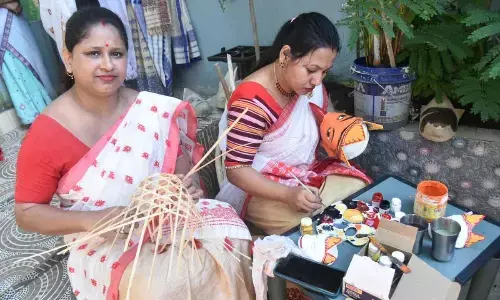Why youngsters are at risk of developing a Heart stroke?

Why youngsters are at risk of developing a stroke?
Gone are the days when heart attacks and strokes were only restricted to the elderly and those who had a history of cholesterol, smoking and diabetes as the disease is getting more common now among people as young as 25-year-olds
Gone are the days when heart attacks and strokes were only restricted to the elderly and those who had a history of cholesterol, smoking and diabetes as the disease is getting more common now among people as young as 25-year-olds. With an increase in sedentary lifestyles and changing times, there has been a drastic shift in those likely to suffer from it and in recent years more youngsters have succumbed to strokes.
According to the World Health Organisation (WHO), stroke is the second largest factor responsible for mortality around the world. Approximately, 13 million people suffer from the disease every year and roughly 5.5 million people die from it annually. In India, the condition is spreading at a more alarming rate where every 40 seconds one person in the country gets a stroke.
What is a stroke?
A stroke is defined as a transient ischemic attack or a cerebrovascular accident that occurs when the blood flow to the brain is blocked which prevents the brain from getting the optimum oxygen and nutrients from the blood. Due to a lack of oxygen and nutrients, brain cells begin to die within minutes causing lasting brain damage, long-term disability and even death.
A recent study conducted by the Indian Council of Medical Research (ICMR) has highlighted that even though the disease is found to be less common, about 10-15% of all types of strokes that occur among young adults result in nearly one-fifth of hospitalizations and can have a devastating impact on the productive years of a young person's life.
The most common type of stroke is an ischemic stroke caused by a blockage in the blood vessels that supply blood to the brain. The other predominant causes of stroke among youngsters include -
Subarachnoid hemorrhage (SAH) - This occurs when there is bleeding in an area between the arachnoid membrane and the pia mater that surrounds the brain. Aneurysmal rupture is the most common cause of SAH
Intracranial hemorrhage - It happens when the blood vessels within the brain parenchyma rupture or leak. Hypertension is the most common cause.
These two causes have been found to affect more young adults (40-55%) when compared with the general stroke population (15-20%).
What are the signs and symptoms of the disease?
Signs of stroke range from mild weakness to paralysis on one side of the face or body. Among youngsters, a stroke is defined as FAST which stands for Facial drooping, Arm weakness, Speech difficulties and Time. With this acronym, we can detect stroke and act timely in golden hours. The signs and symptoms of stroke amongst youngsters also include -
l Sudden confusion
l Trouble in speaking or understanding
l Difficulty in seeing in one or both eyes
l Loss of balance or coordination, dizziness, and trouble walking
l Sudden and severe headache with no known cause
What are the risk factors?
An increase in a sedentary lifestyle is the primary reason for higher stroke cases nowadays. Several risk factors such as smoking, alcoholism, increased BMI due to lack of exercise, diabetes, hypertension, dyslipidemia, past H/o stroke, Family history, rheumatic heart disease with atrial fibrillation, and oral contraceptive pills (2-5 fold increased risk for women) can cause a stroke.
Stress, sleep deprivation, and consumption of packaged foods are some of the most common reasons causing higher stroke cases among youngsters.
How can you lower your risk of stroke?
There are several ways through which you can lower your risk of stroke -
l Adopt a healthy diet by consuming nutritious fresh unprocessed foods and limit your salt intake as they can reduce your risk of hypertension, Type 2 diabetes, and high cholesterol, all of which as the classic risk factors for stroke.
l Get at least 30 minutes of consistent physical activity every day to overcome issues like Obesity. Weight loss can help in lowering your blood pressure and can help relieve stress in the heart, lungs, blood vessels and bones.
l Smokers have two to four times higher risk of stroke than non-smokers, hence, one must avoid or quit smoking.
l If you are suffering from diabetes then you should monitor your blood sugar levels, take your prescriptions and visit a doctor every few months.
l If you have previously had a stroke, you must judiciously take the medications prescribed by your doctor that can help in preventing you from another stroke.
Time is precious
A delay by a single minute can ruin a person's life drastically and hence, timely diagnosis and treatment of Acute Stroke in golden hours is the key to reversing the stroke symptoms and reducing morbidity and mortality. Knowing the right signs and symptoms and increasing awareness of your nearby surroundings can help in saving several lives. It is also important to note that if your loved one or a person near you has suffered a stroke then you must immediately take them to the hospital with the Stroke unit and Cath lab (Brain Angio and Mechanical Thrombectomy can be done) as "Every minute is precious" during this time and it can help in saving his/her life.
















